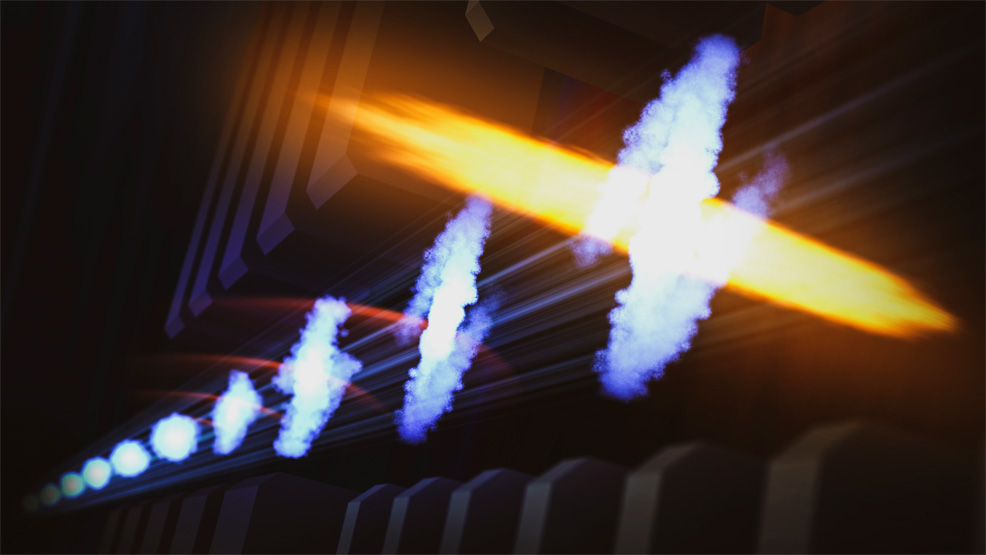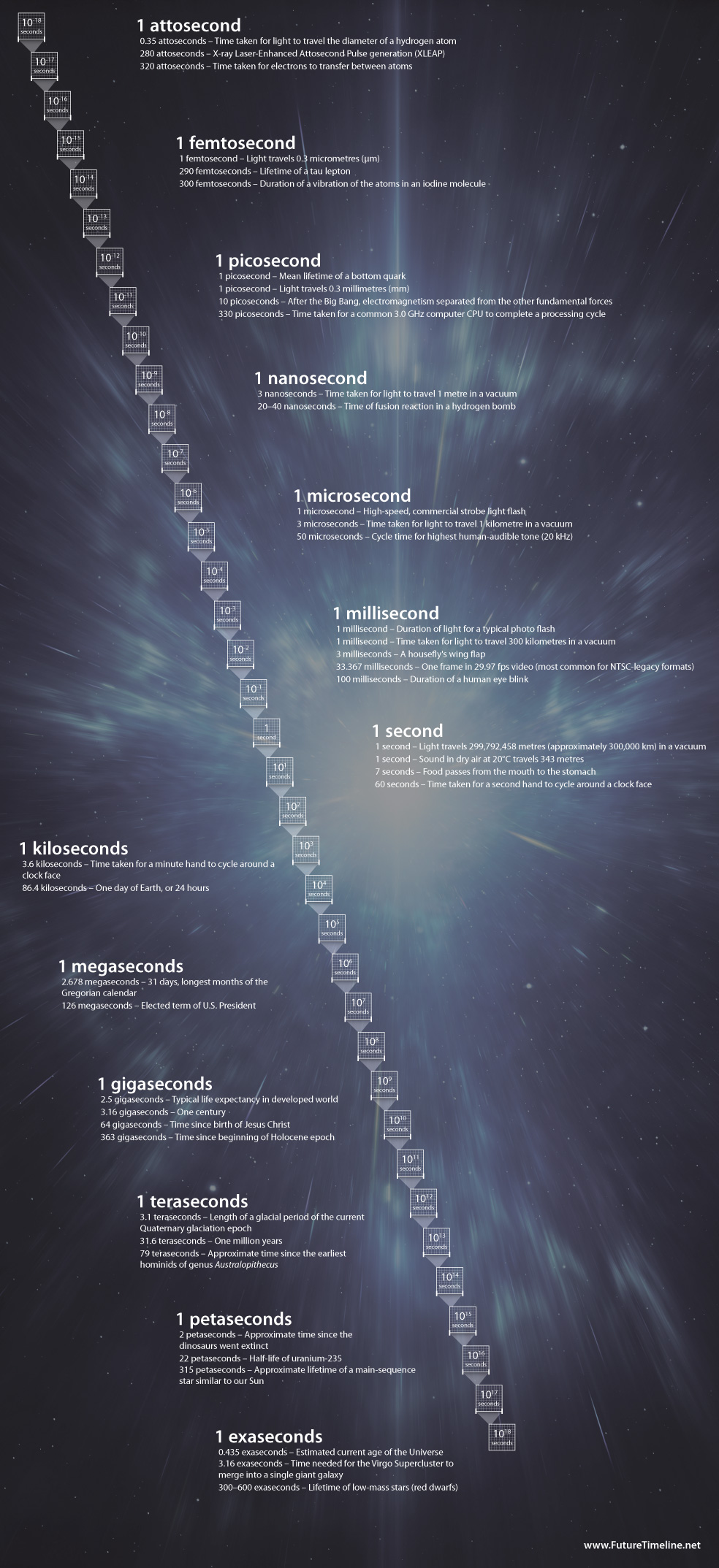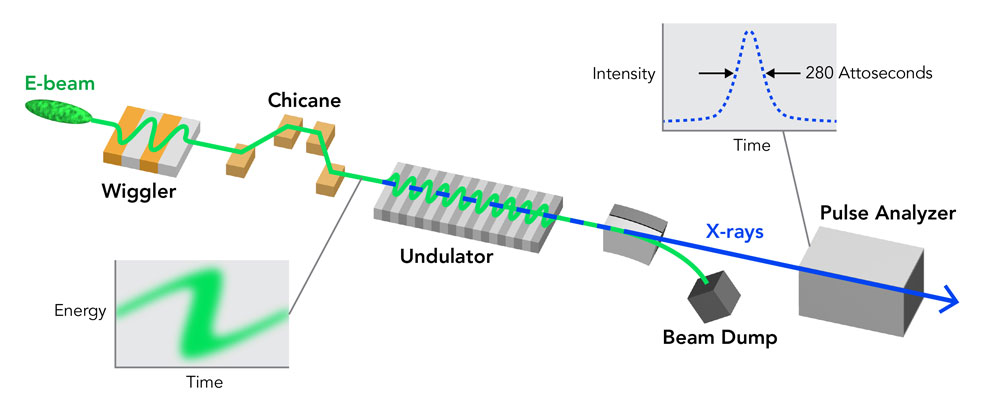
28th December 2019 New laser method provides ultra-fast observations of electrons Researchers at the U.S. Department of Energy have demonstrated X-ray Laser-Enhanced Attosecond Pulse generation (XLEAP), a new method for observing the movements of electrons in chemical processes, using laser bursts just 280 attoseconds in duration.
Researchers at the Department of Energy's SLAC National Accelerator Laboratory have demonstrated a way to observe the movements of electrons with powerful X-ray laser bursts just 280 attoseconds, or billionths of a billionth of a second, long. The technology, called X-ray Laser-Enhanced Attosecond Pulse generation (XLEAP), is a major advance that paves the way for studies of how electrons speeding around molecules initiate crucial processes in biology, chemistry, materials science and more. "Until now, we could precisely observe the motions of atomic nuclei, but the much faster electron motions that actually drive chemical reactions were blurred out," says James Cryan, a scientist at the Stanford PULSE Institute and one of the paper's lead authors. "With this advance, we'll be able to use an X-ray laser to see how electrons move around and how that sets the stage for the chemistry that follows. It pushes the frontiers of ultrafast science." Studies on these timescales could reveal, for example, how the absorption of light during photosynthesis almost instantaneously pushes electrons around and initiates a cascade of much slower events that ultimately generate oxygen. "With XLEAP, we can create X-ray pulses with just the right energy that are more than a million times brighter than pulses of similar energy before," explains SLAC scientist Agostino Marinelli, XLEAP project lead and another of the paper's lead authors. "It'll let us do so many things people have always wanted to do with an X-ray laser – and now also on attosecond timescales."
Click to enlarge
One attosecond is an almost unimaginably short period of time – two attoseconds is to a second as one second is to the age of the universe. In recent years, scientists have made a lot of progress in creating attosecond X-ray pulses. However, these pulses were either too weak, or they didn't have the right energy to home in on speedy electron motions. Marinelli and colleagues spent the past three years researching how an X-ray laser method first suggested 14 years ago could be used to generate pulses with the right properties – an effort that resulted in XLEAP. In experiments using the Linac Coherent Lightsource (LCLS), a free electron laser facility located at SLAC, California, they generated precisely timed pairs of attosecond X-ray pulses. These ultra-short laser bursts set electrons in motion and the scientists were able to record those movements, with snapshots being strung together like stop-motion movies. X-ray lasers like the LCLS routinely generate light flashes that last a few millionths of a billionth of a second, or femtoseconds. The process starts with creating a beam of electrons, which are bundled into short bunches and sent through a linear particle accelerator, where they gain energy. Moving at near the speed of light, they pass through a magnet known as an undulator, where some of their energy is converted into X-ray bursts. The shorter and brighter the electron bunches, the shorter the X-ray bursts they create, so one approach is to compress the electrons into smaller and smaller bunches with high peak brightness. XLEAP is a clever way to do just that, using two additional sets of magnets ("wiggler" and "chicane" in the diagram below) to shape each electron bunch into an intense, narrow spike containing electrons with a broad range of energies. The spikes then produce attosecond X-ray pulses in the undulator, with a customised pulse analyser (right) to measure the extremely short pulse lengths.
"When we send these spikes – with pulse lengths of about a femtosecond – through the undulator, they produce X-ray pulses that are much shorter than that," said Joseph Duris, a SLAC staff scientist and paper co-first-author. The pulses are also extremely powerful, he explains, with some of them reaching half a terawatt peak power. "XLEAP is a truly great advance," said Linda Young, an expert in X-ray science at the DOE's Argonne National Laboratory and the University of Chicago who was not involved in the study. "Its attosecond X-ray pulses of unprecedented intensity and flexibility are a breakthrough tool to observe and control electron motion at individual atomic sites in complex systems." The XLEAP team are now further optimising their method, which could lead to even shorter and more precisely timed pulses. They are also preparing for an upgrade of the LCLS, known as LCLS-II (seen in the video below). This will fire up to a million X-ray pulses per second – over 8,000 times faster than before – enabling researchers to do experiments long dreamed of, such as studies of individual molecules and their behaviour on nature's fastest timescales. The XLEAP team's work is published this month in Nature Photonics.
Comments »
If you enjoyed this article, please consider sharing it:
|









